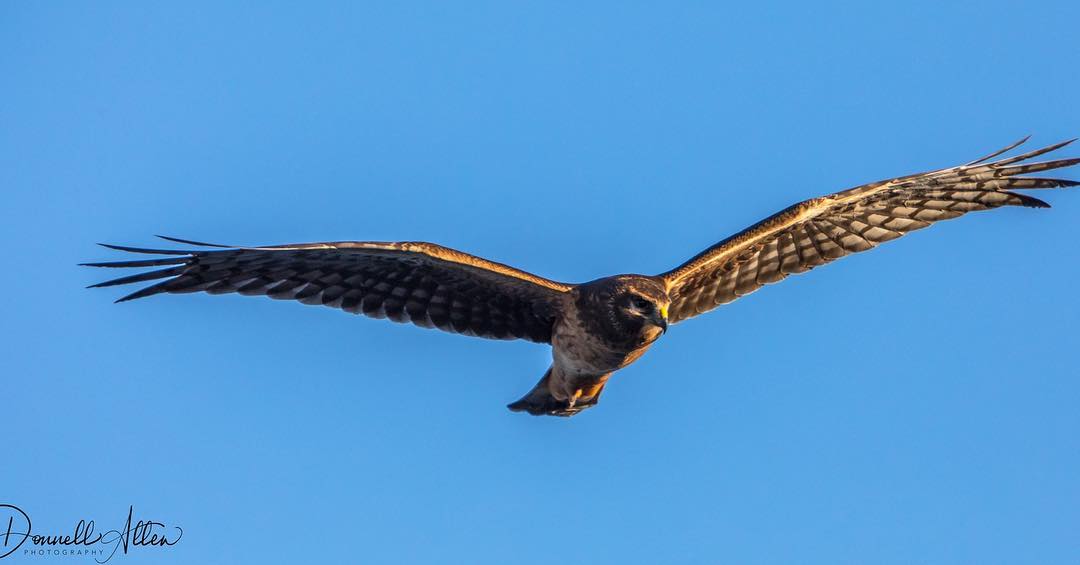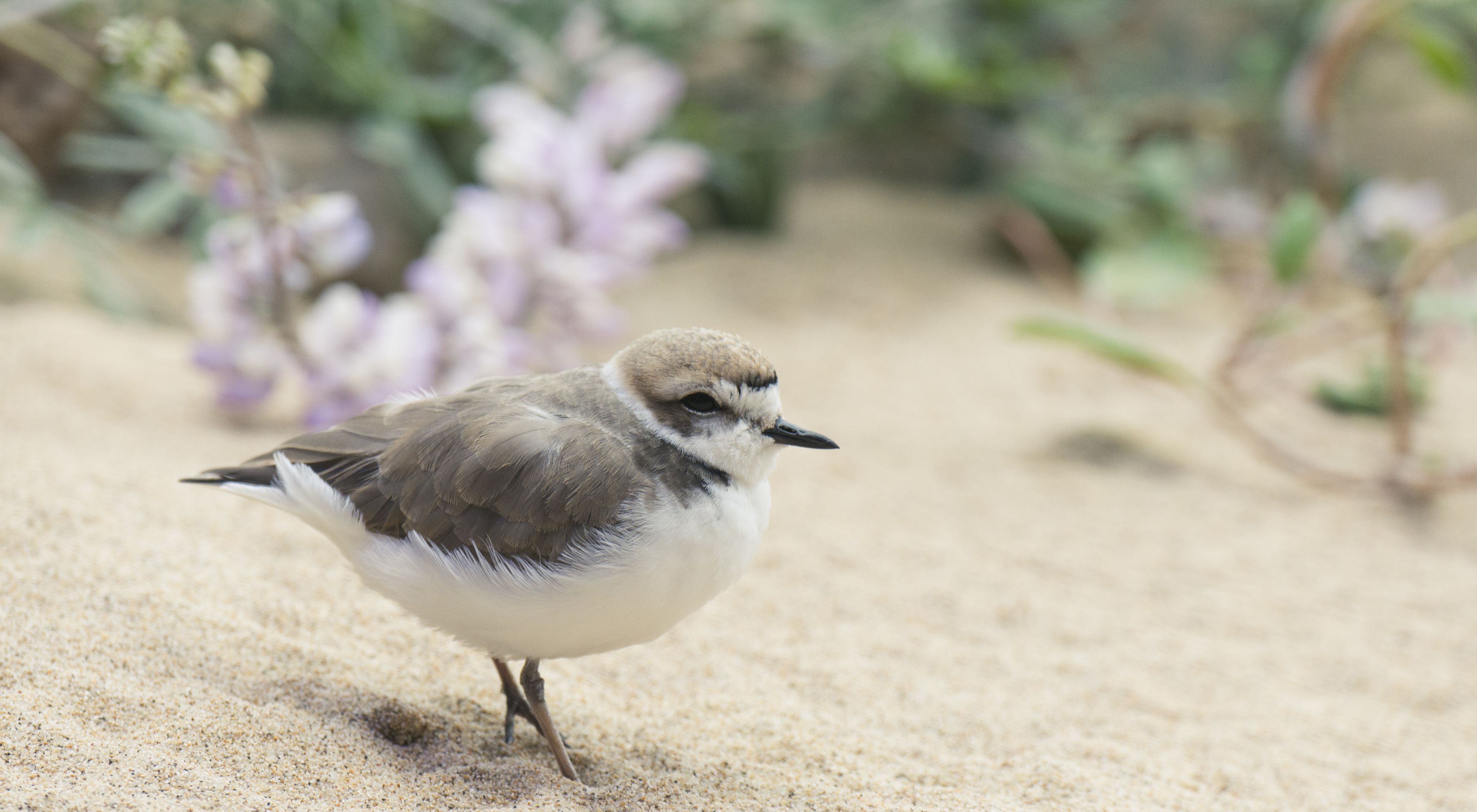If you’d like to see why Audubon ranks Colorado among the top ten states for big bird lists in spite of having no coastline, then head to the San Luis Valley. Its variety of riparian habitats covering thousands of acres are home to, or stop-overs for, an incredibly diverse population. Of the more than 500 species of birds in Colorado, over 300 of them can be found in the valley. But it’s the hopping, dancing and rattling calls of the sandhill cranes numbering up to 20,000 that make the San Luis Valley especially impressive for bird enthusiasts.
 Cranes, Monte Vista Wildlife Refuge. Photo by © John J. Rawinski
Cranes, Monte Vista Wildlife Refuge. Photo by © John J. Rawinski
Where is the San Luis Valley?
The extent of not only natural but also historical assets in the San Luis Valley is nationally recognized. It is home to the state’s earliest civilizations. In 2009, the area was designated as part of the Sangre de Cristo National Heritage Area.
Just 3.5 hours southwest of Denver via US-285 and a welcome relief from I-70, the San Luis Valley is bordered to the east by the narrow, craggy peaks of the Sangre de Cristo mountains, ten of which soar to over 14,000 feet, and on the west by the San Juan Mountains. It is a stunning landscape with more than a dozen state wildlife parks, areas, and refuges - most of them less than an hour’s drive from Alamosa. The Great Sand Dunes National Park and Preserve is yet another gem in the San Luis Valley.
Friday Get-Away - Places to Eat Between Denver and Alamosa
There are two main routes to Alamosa - the more scenic Denver to Alamosa via US-285 or the bit shorter route from Denver to Alamosa via Pueblo. If you are taking US-285 then consider a stop about 2.5 hours into your drive. Buena Vista’s restaurant options include the fast-casual, from scratch, healthy food at House Rock Kitchen and The Jailhouse. The Jailhouse is a historic jail turned boutique craft beer bar where you can nosh on bar snacks like homemade meat pie, hummus, and pita or a meat and cheese plate to wash down with your craft beer. To up-level your dining experience, try the seasonal handcrafted cuisine and specialty cocktails in the Wesley & Rose Lobby Bar at the boutique, riverside Surf Chateau Hotel.
Salida, 25 miles south of Buena Vista could be another dinner stop. The Fritz gastropub will find you enjoying truffle fries, tapas, tasty sandwiches, local beers, and creative cocktails. There’s also a tap-house with scratch pizzas, calzones, pasta, and salads at Amicas or try the custom-blended brisket burgers, turkey burgers, grilled chicken, fresh fish, salads and sandwiches along with a float or shake at 50 Burger. The drive south on I-25 if taking the Pueblo route will have numerous options whether in Colorado Springs or Pueblo.
If leaving Denver early enough and particularly when there are longer daylight hours, have an early dinner in Buena Vista or Salida (all of the options listed above open by 4 pm or earlier) and consider a stop at the Russell Lakes State Wildlife Area. It will be another good break spot from the car about an hour from Salida and 1.5 hours from Buena Vista or head there on your way back to Denver if you the time.
Russell Lakes State Wildlife Refuge. The always open Johnson Lake Nature Trail at Russell Lakes State Wildlife Refuge is on the east side of US-285. Great horned owls often nest in the small grove of trees in the parking area but you might also find warbler’s and Bullock’s orioles. You’ll have good views of ponds and meadows from the boardwalk, spotting several species of ducks in the winter months if the water isn't frozen. Come Spring, find a number of birds including Western and Clark’s Grebes, American Bittern, Yellow-Headed Blackbird, Virginia Rail, Marsh Wren, Common Yellowthroat and Savannah Sparrow. Russell Lakes State Wildlife Refuge map and information. Other than the nature trail, the site is closed for nesting between February 15th and July 15th.
 Yellow-Headed Blackbird Photo by © John J. Rawinski
Yellow-Headed Blackbird Photo by © John J. Rawinski
Where to Stay in Alamosa
There are a number of lodging options in Alamosa, including sites for camping and RVs.
Saturday Morning Bright and Early - Cranes at Monte Vista Wildlife Refuge
If you need your cuppa Joe before you head to the wildlife refuge, see the late breakfast/lunch options below.
Twice each year, 20,000 greater sandhill cranes descend on the valley to feed in the barley fields, rest, mate, and if already mated, to strengthen these lifelong bonds. In mid-March, the cranes’ 7-foot wingspans carry them aloft from winter nesting grounds in Northern New Mexico on their way to summer breeding and nesting grounds in Idaho, Montana, and Wyoming. In mid-October, they return on their southern migration.
The cranes’ connection to humans dates back thousands of years. In an undisclosed Rio Grande National Forest location, a 6’x2’ petroglyph of a bird in flight was discovered in 1984. The “big bird” petroglyph is said to be a rendition of a sandhill or whooping crane. Perhaps it is this ancient connection that explains why those who have the opportunity to see them experience such wonder and awe.
Birders can view the cranes in the wetlands of the area including Alamosa and Russell Lakes but particularly the Monte Vista Wildlife Refuge, home to one of the oldest crane festivals in the United States and just 20 minutes west of Alamosa. The 37th Annual Monte Vista Crane Festival will be held the first weekend in March of 2020. While you can travel the same 4-mile route on your own, free tours are offered at 7 am and 4 pm when the birds are most active. During the tour, U.S. Fish and Wildlife staffers provide information on the migration and refuge.
If you have the stamina, set the alarm in time to get there just before sunrise. You won’t regret the crisp air, listening to the sounds and seeing the sights of birds welcoming the day, not to mention the sunrise over the Sangre de Cristos. There is a reason the explorer who saw the range at this time of day uttered: “Sangre de Cristo” which means “Blood of Christ.” Even if you don’t travel through the area during the sandhill crane migration, the refuge is a haven for other migratory and breeding birds as well as wildlife no matter the season. See “Seasons of Wildlife" in the link below. The refuge is open sunrise to sunset.
Monte Vista National Wildlife Refuge information
Late Breakfast or Lunch in Alamosa
For Starbucks can’t do withouters, there’s one in town. If you’re more of a hearty breakfast goer, try the Campus Cafe (6 am-1 pm) known for its cinnamon rolls among other breakfast fare. The Roast Cafe (7 am-2 pm) has Big River biscuits and gravy or huevos rancheros along with other choices on its menu. If you’re coming back to town later in the day and need a lunch spot, there’s Locavores, serving fresh inspired lunches and dinners in a fast-casual restaurant or Calvillos Mexican Restaurant (breakfast, lunch or dinner), for ample all-day buffet dishes to choose from. You can also order from the menu.
Saturday Afternoon - More Things to Do in Alamosa
Explore the Alamosa Wildlife Refuge. The Alamosa Wildlife Refuge is located just 6 miles southeast of Alamosa and is open starting one hour before sunset. It closes one hour after sunset. You can save this for Sunday or head there on your Saturday afternoon. There is a volunteer-staffed visitor’s center but note that it is open only occasionally and is closed in October-March. Call 719-589-4021 for more information or email: This email address is being protected from spambots. You need JavaScript enabled to view it..
Start your birding excursion by driving the 3.5-mile auto tour route or head out to the bluff overlook. The bluff overlook gives you sweeping views of the Rio Grande floodplains and surrounding mountains. You can also walk or bike the out and back 3.8 mile Rio Grande River Trail. What you’ll see on the Alamosa Wildlife Refuge Rio Grande River Trail includes the endangered Southwestern Willow Flycatcher. It’s an important breeding ground for these birds. Northern Harriers are easily spotted flying over the marshes; perhaps you’ll even see the male “gray ghost.” This raptor is specially designed for silent hunting: it’s broad wings require minimal flapping and enable the bird to fly lower and closer to its prey. Alamosa Wildlife Refuge website.
 Northern Harrier. Photo By © Donnell Allen Photography
Northern Harrier. Photo By © Donnell Allen Photography
Nap and/or Explore Alamosa and the Surrounding Area. By now you might be in need of a nap, particularly if you were birding at sunrise. If not, enjoy the afternoon on an Alamosa historic walking tour. If you don’t mind the hour drive, visit Stations of the Cross shrine located about 45 minutes southeast of Alamosa to appreciate some of the profound religious, cultural and historical heritage of the valley. The shrine sits atop La Mesa de la Piedad and de la Misericordia (Hill of Piety and Mercy) along which you can contemplate the stations, a series of bronze sculptures that depict the last hours of Christ’s life.
Return to the Monte Vista Wildlife Refuge at Sunset or Head to the Great Sand Dunes National Park & Preserve. If you enjoyed the sunrise at the refuge, return at sunset if you can. The changing light, cooling temperatures and shifting clouds give an altogether different experience that birders and non-birders alike will both appreciate. The Great Sand Dunes National Park and Preserve is only about 45 minutes from Alamosa and is a place that encourages all sorts of discovery - including after dark! It’s a certified International Dark SkyPark. Great Sand Dunes National Park and Preserve Night Sky Programs. Nine types of owls either breed here or are migratory, including the rare Northern Pygmy, Burrowing and Short-Eared Owls. Bird checklist, Great Sand Dunes.
Dinner in Alamosa
In addition to the options noted above for lunch or dinner, if you’re in the mood for brews, salads, street tacos, sandwiches and more, try the San Luis Valley Brewing Company.
Sunday - Other Riparian Habitats in the San Luis Valley
Maybe today is a day to sleep in a bit before breakfast at one of the options you didn’t try yesterday.
Depending on how much time you have before driving back to Denver, there are a number of other riparian habitats in the San Luis Valley. The Colorado Birding Trail, a tourism initiative created to promote non-consumptive outdoor recreation, conservation of resources by private landowners, and a diversified income for rural economies, provides a map along with information for more than a dozen different locations. Birding in the San Luis Valley map.
 Snowy Plover. Photo By © Kiliii Yuyan
Snowy Plover. Photo By © Kiliii Yuyan
At Blanca Wetlands, less than 30 minutes northeast of Alamosa, you’ll find most of the area’s wetland birds as well a sensitive species, the Western Snowy Plover. Blanca is closed for nesting season between February 15th and July 15th. Pick up a map at the kiosk you’ll find at the entrance.
Home Lake State Wildlife Area is another spot with impressive diversity about 20 minutes from Alamosa whether for waterfowl or other birds that take advantage of the trees that surround the lake. In the wintertime, look for golden and bald eagles. Home Lake is open year-round from sunrise to sunset.
Resources: Birding Hotspots of South-Central Colorado by John J. Rawinski. Available at Buteo Books or save on shipping and support a local co-op by picking one up from the Narrow Gauge Book Co-Op in Alamosa.
Thanks to John Rawinski for his help with this article. John is a retired US Forest Service soil scientist who has been documenting birds in Colorado since 1982. He is a passionate environmental advocate and works as an expert naturalist at Zapata Ranch. See his photos at Bear Visions Photography.
Thanks also to Deb Callahan, a local, retired Wildlife Biologist for her birding insight
About the writer: Laurie Marks is a health, travel and tourism writer based in Durango, Colorado






